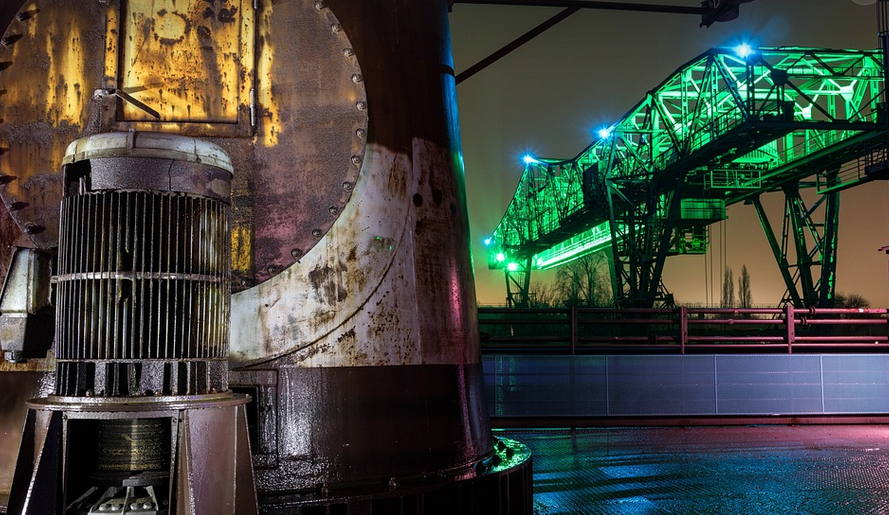
What Makes 316L Stainless Steel So Special?
Stainless steel has become a household name, synonymous with durability, corrosion resistance, and versatility in various industries. But within this broad family of alloys, stainless steel 316L stands out as a particularly popular choice due to its unique blend of properties.
Let’s start by delving into the science behind why 316L is so sought after. You see, stainless steel isn’t just about chromium and nickel; it’s about achieving a remarkable balance of elements that contribute significantly to its overall strength and longevity.
At the heart of this alloy lies the presence of molybdenum – often hailed as the key ingredient to 316L’s success. Molybdenum enhances the steel’s resistance to pitting corrosion, particularly in demanding environments exposed to aggressive chemicals or high temperatures.
Understanding the Advantages of 316L Rods
The benefits of using 316L stainless steel welding rods are numerous. One significant advantage is their superior resistance to corrosion and degradation compared to other types of stainless steel.
In essence, 316L becomes your steadfast ally in environments where regular stainless steel might crumble or succumb to rust and chemical attack.
Let’s take a closer look at the advantages that come with using this specific type of welding rod:
* **Increased Corrosion Resistance:** The addition of molybdenum makes 316L incredibly resistant to even the most aggressive corrosive elements, making it ideal for projects in harsh environments like chemical processing plants, maritime industries, and food-processing facilities. * **Enhanced Weld Quality:** 316L rods offer remarkable weld quality due to their ability to produce strong and durable welds with minimal slag formation. This translates into fewer post-weld issues, saving you time and money. * **Exceptional Strength and Durability:** 316L boasts a high yield strength and ultimate tensile strength, making it an ideal choice for applications involving heavy loads or dynamic stress. That’s why this material proves immensely valuable in construction, infrastructure projects, and heavy machinery.
Who Should Opt for 316L Welding Rods
While the benefits of using 316L welding rods are widespread, their ideal use cases are particularly visible in specific industries:
* **Chemical Processing:** The chemical industry thrives on stainless steel’s ability to resist corrosive chemicals. In this sector, 316L is a preferred choice for equipment like reactors, tanks, and pipelines due to its resistance to acids, solvents, and even saltwater. * **Marine Construction:** Ships, offshore platforms, and other marine structures rely heavily on reliable materials that can withstand harsh weather conditions and corrosive sea water. 316L’s superior corrosion resistance makes it an ideal choice for these applications. * **Food Manufacturing:** Food processing facilities require stainless steel solutions that not only meet stringent hygiene standards but also provide longevity in their equipment, minimizing downtime and maintenance expenses. 316L offers the perfect solution due to its non-oxidizing nature and excellent food compatibility. * **Medical Devices:** The medical field demands materials that are biocompatible, sterile, and capable of withstanding high temperatures. 316L’s versatility and reliability make it a preferred choice for medical equipment like implants, surgical instruments, and laboratory equipment.
Choosing the Right Welding Rod: A Few Key Considerations
Selecting the right welding rod for your project requires careful consideration of your specific needs.
Here are some factors to consider when choosing 316L welding rods:
* **Weld Application:** Do you need a weld for structural support, internal components, or outer surfaces? Your application will dictate the rod’s thickness and diameter. * **Heat Input:** The amount of heat energy applied during welding influences welding rod selection. 316L rods are often used in high-temperature applications as they handle heat well. * **Welding Position:** Consider your welding position. For overhead work, certain types of 316L rods are designed for specific positioning needs. * **Cost and Availability:** The cost of welding rods can vary based on their quality, brand, and availability. Research and compare different options to find the best fit for your budget and project requirements.
Safety First: Welding with 316 L Rods
Before embarking on any welding project, safety must be a top priority. Remember these essential practices:
* **Personal Protective Equipment (PPE):** Always wear appropriate PPE, including welding helmets, gloves, and protective clothing to prevent burns and exposure to fumes from the welding process. * **Ventilation:** Ensure adequate ventilation in your workspace to eliminate welding fumes or gas released during the process; this practice is crucial for maintaining a safe working environment. * **Proper Welding Techniques:** Thorough knowledge of proper welding techniques is essential. It’s important to study and follow safety guidelines from reputable sources like manufacturers, welding professionals, and educational institutions.
***